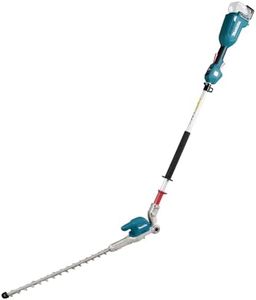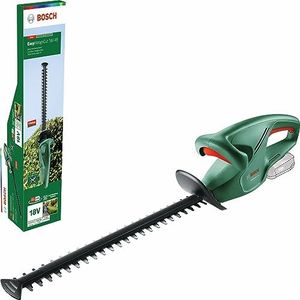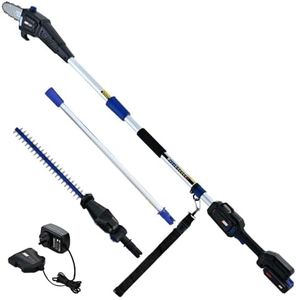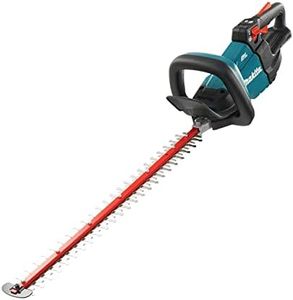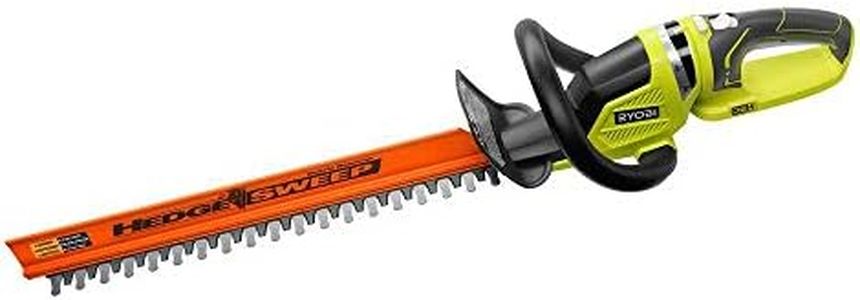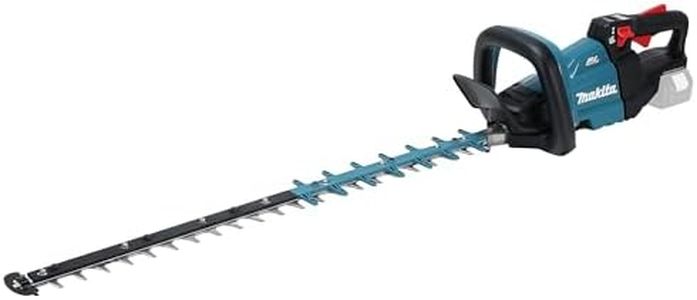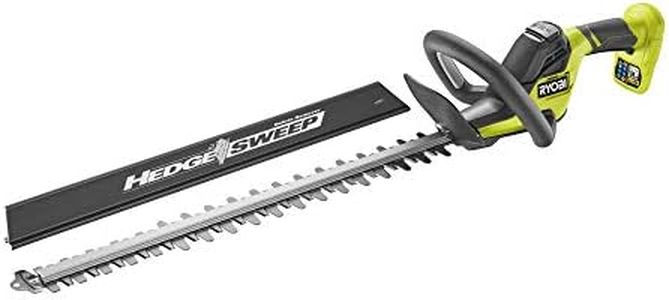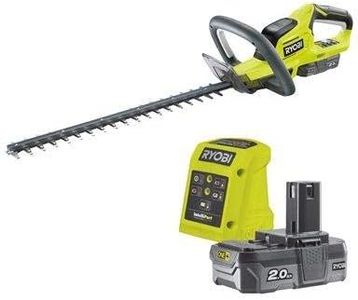We Use CookiesWe use cookies to enhance the security, performance,
functionality and for analytical and promotional activities. By continuing to browse this site you
are agreeing to our privacy policy
10 Best Hedge Trimmer
From leading brands and best sellers available on the web.By clicking on a link to a third party's website, log data is shared with that third party.
Buying Guide for the Best Hedge Trimmer
Choosing the right hedge-trimmer is mainly about matching the tool to your garden size, plant types, and how often you'll use it. Start by thinking about your hedges: are they tall or short, thick or fine, formal or just a few bushes? Consider how comfortable you are using power tools, and whether you need something lightweight, easy to start, or powerful enough for tougher branches. The right hedge-trimmer can make the job faster, easier, and safer, so it’s worth looking at a few key features before making your decision.Power SourceThis tells you how the hedge-trimmer is powered—options usually include electric (corded), cordless (battery), or gas. Electric models need a power socket and are good for small-to-medium gardens, while cordless models give much more freedom to move, ideal for larger or hard-to-reach spots, but they run for a limited time per charge. Gas trimmers are the most powerful and better for really big, thick hedges, but can be heavier, noisier and need engine care. To pick the best one for you, think about how far you'll need to reach, how big your hedges are, and whether you want something simple or don't mind a little maintenance.
Blade LengthBlade length decides how much of the hedge you can cut in a single pass. Shorter blades (16–18 inches) are lighter, easier to maneuver, and best for smaller, neat hedges or tight spaces. Medium blades (18–22 inches) offer a good balance for average gardens, letting you cover branches quickly but still have decent control. Longer blades (over 22 inches) are ideal for wide, tall hedges, letting you trim more at once but they can be harder to handle, especially for beginners. Choose the blade length based on your hedge size and your comfort level with holding a longer tool.
Cutting CapacityCutting capacity refers to the maximum branch thickness the trimmer can handle, often shown as the gap between blade teeth. A smaller capacity (up to 1/2 inch) is fine for light, frequent trims on tidy, softer hedges. Medium (up to 3/4 inch) can deal with most common hedging tasks, including older, slightly thicker branches. A higher capacity (up to 1 inch or more) is needed for overgrown, tough or mature shrubs. Think about the thickness of branches you usually face; going too small means you might struggle, but a very high capacity model can be heavier and less precise for light grooming.
Weight and ErgonomicsThe weight of the hedge-trimmer and the way it feels in your hands matter for comfort and ease of use. Lighter trimmers are better for longer trimming jobs or if you’re not used to holding power tools, making them easier to control overhead or at odd angles. Heavier trimmers may be needed for more power, but can tire you out quickly. Look for ergonomic features like soft grips, balanced handles, or rotatable heads, which help reduce strain. Consider how long you’ll be working and how much tool weight feels comfortable to you.
Safety FeaturesSafety is important, especially for power tools that can cut. Common features include blade covers, dual-switch activation (requiring two hands to operate), anti-jam technology, and quick blade stops. These make it less likely for accidents to happen. If you’re new to hedge-trimming or will be working around children or pets, prioritize tools with extra safety measures for peace of mind.
Ease of MaintenanceSome trimmers are easier to clean, oil, and maintain, which helps them last longer and stay sharp. Gas models will require more regular upkeep like fueling and cleaning the engine, while battery or corded models need less. Blades may need occasional sharpening or replacing. If you want a hassle-free experience, look for trimmers with easily accessible blades or self-cleaning/anti-jam features.

